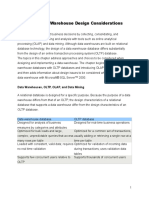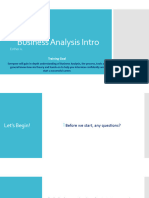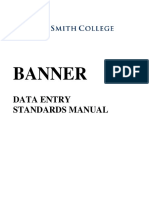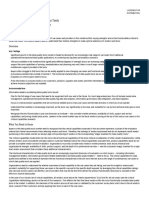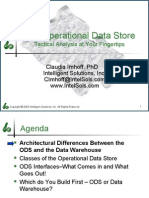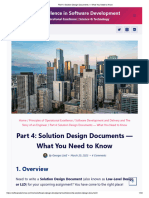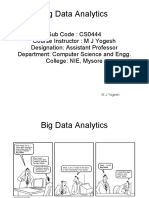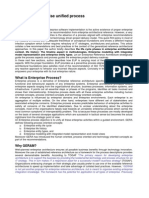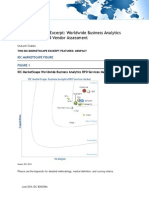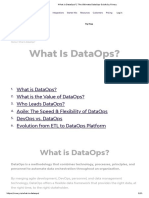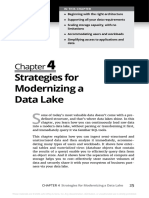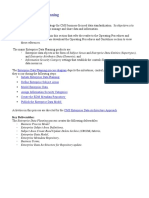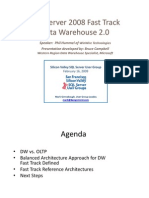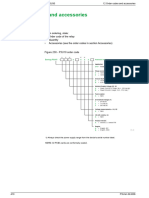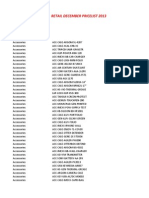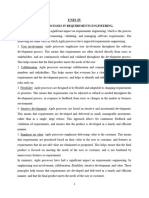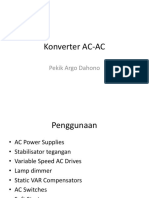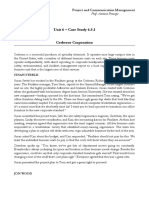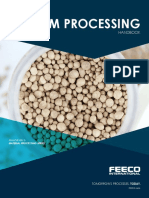0% found this document useful (0 votes)
437 views31 pagesDesignMind Data Warehouse
This session will focus on best practices and tips on how to design and develop a Data Warehouse using Microsoft SQL Server BI products.
Elizabeth Diamond is a Data Warehouse Architect, ETL Architect and Microsoft BI Expert. As the Lead Data Warehouse Architect/Developer at DesignMind, Elizabeth has been responsible for inception and full lifecycle of the Carl Zeiss Vision corporate enterprise data warehouse.
You will Learn:
•How to Architect a data warehouse system from End-to-End
•Components of the data warehouse and functionality
•How to Profile data and understand your source systems
•Whether to ODS or not to ODS (Determining if a operational Data Store is required)
•The staging area of the data warehouse
•How to Build the data warehouse – Designing Dimensions and Fact tables
•The Importance of using Conformed Dimensions
•ETL – Moving data through your data warehouse system
•Data Cubes - OLAP
•Lessons learned from Zeiss and other projects
Technologies covered include:
•Using SQL Server 2008 as your data warehouse DB
•SSIS as your ETL Tool
•SSAS as your data cube Tool
Elizabeth Diamond is a consultant with DesignMind in Data Warehousing and Business Intelligence. She's been a key member of teams that develop comprehensive Enterprise Data Management Systems since 1986. As a Lead Data Warehouse Architect and ETL Developer she has implemented end-to-end Data Warehouse systems providing valuable information and increased sales and profits.
Elizabeth has co-authored articles and speaks throughout the U.S. on such topics as “Building the Connection Between Your Business and Your IT Infrastructure”, “Developing Your Enterprise Data Warehouse Using Business Processes” and many other Data Warehouse Architecture and ETL topics.
Uploaded by
Mark GinnebaughCopyright
© Attribution Non-Commercial (BY-NC)
We take content rights seriously. If you suspect this is your content, claim it here.
Available Formats
Download as PDF, TXT or read online on Scribd
0% found this document useful (0 votes)
437 views31 pagesDesignMind Data Warehouse
This session will focus on best practices and tips on how to design and develop a Data Warehouse using Microsoft SQL Server BI products.
Elizabeth Diamond is a Data Warehouse Architect, ETL Architect and Microsoft BI Expert. As the Lead Data Warehouse Architect/Developer at DesignMind, Elizabeth has been responsible for inception and full lifecycle of the Carl Zeiss Vision corporate enterprise data warehouse.
You will Learn:
•How to Architect a data warehouse system from End-to-End
•Components of the data warehouse and functionality
•How to Profile data and understand your source systems
•Whether to ODS or not to ODS (Determining if a operational Data Store is required)
•The staging area of the data warehouse
•How to Build the data warehouse – Designing Dimensions and Fact tables
•The Importance of using Conformed Dimensions
•ETL – Moving data through your data warehouse system
•Data Cubes - OLAP
•Lessons learned from Zeiss and other projects
Technologies covered include:
•Using SQL Server 2008 as your data warehouse DB
•SSIS as your ETL Tool
•SSAS as your data cube Tool
Elizabeth Diamond is a consultant with DesignMind in Data Warehousing and Business Intelligence. She's been a key member of teams that develop comprehensive Enterprise Data Management Systems since 1986. As a Lead Data Warehouse Architect and ETL Developer she has implemented end-to-end Data Warehouse systems providing valuable information and increased sales and profits.
Elizabeth has co-authored articles and speaks throughout the U.S. on such topics as “Building the Connection Between Your Business and Your IT Infrastructure”, “Developing Your Enterprise Data Warehouse Using Business Processes” and many other Data Warehouse Architecture and ETL topics.
Uploaded by
Mark GinnebaughCopyright
© Attribution Non-Commercial (BY-NC)
We take content rights seriously. If you suspect this is your content, claim it here.
Available Formats
Download as PDF, TXT or read online on Scribd
/ 31
